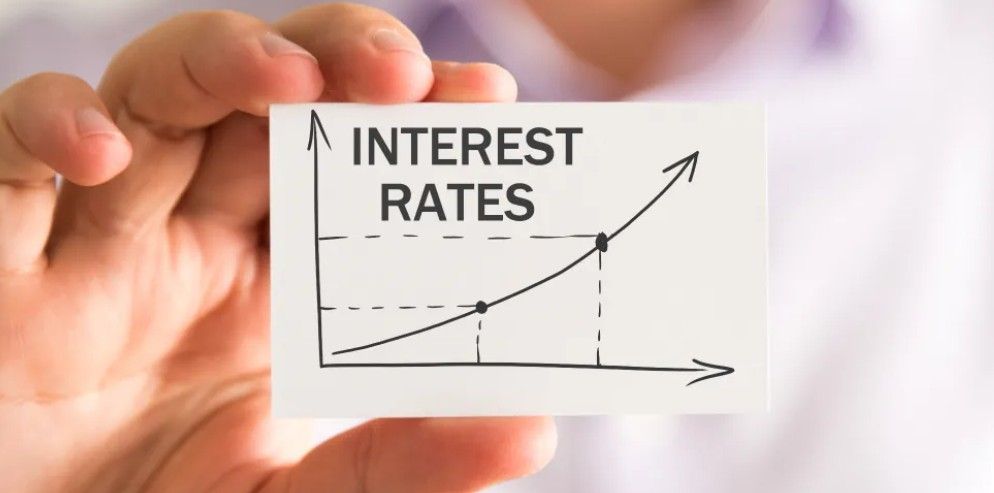Why Do Fixed Deposit Interest Rates Fluctuate?
Written by Pradnya Surana
4 min read | Updated on November 24, 2025, 16:42 IST

Changes in Fixed Deposit Interest Rates
Fixed deposit (FD) offers an assured rate of throughout the deposit tenure but the rate of interest can change from time to time. Yes, you must have noticed that FD interest rates change from time to time. One-month banks offer 7% and a few months later, it drops to 6.5%.
What causes these fluctuations?
The Reserve Bank of India's Influence
The Reserve Bank of India (RBI),which is the governing body of Indian banks, is the primary driver of FD rate changes. The RBI sets the repo rate, which is the interest rate at which it lends money to commercial banks in India.
When the RBI increases the repo rate, banks' borrowing rate of interest increases. So to maintain profitability, banks raise interest rates on loans. Simultaneously, they need to attract more deposits (as borrowing has become expensive for them), so they increase FD rates.
Conversely, when the RBI reduces the repo rate, banks lower loan interest rates and simultaneously FD interest rate reduce too.
Inflation Control
The RBI adjusts repo rates primarily to control inflation. When inflation is high, the RBI increases rates to reduce supply of money in the economy. This slows down spending and in turn prices remain under control. Higher repo rates mean higher FD rates for you.
When inflation is low, the RBI cuts rates to encourage spending for overall economic growth. This results in lower FD rates.
Bank's Liquidity Needs
Individual banks also adjust FD rates based on their liquidity requirements. If a bank needs more funds for lending, it offers attractive FD rates to attract depositors. When a bank has sufficient funds, it may reduce rates.
This is why different banks offer different FD rates at the same time. Smaller banks and Non-banking Financial Corporations (NBFCs) often provide higher rates to attract customers which otherwise would invest in banks.
Economic Conditions
Overall economic health plays a significant role. During economic slowdowns, the RBI usually cuts rates to stimulate growth. With lower rates, people borrow more and spend in the economy improving activities. During boom periods, there is high demand for loans, rates tend to rise.
For example, during the COVID-19 pandemic, RBI drastically cut rates to support the economy and FD rates dropped to historic lows.
Government Borrowing
When the government borrows heavily through bonds and securities, it competes with banks for depositors' money. To remain competitive and attract more deposits, banks may increase FD rates.
Better Interest Rates for Depositors
In order to grab better rates, depositors can,
Stay Informed
Keep a check on RBI policy announcements and economic news to anticipate rate changes.
Invest in High Rates
When rates are relatively high, consider longer-tenure FDs to secure good returns throughout.
Multiple FDs
Instead of putting all money in one FD, create different FDs with different maturity dates. This provides flexibility and helps you benefit from rate increases.
Compare Banks
Don't settle for your regular bank's rate. Smaller banks and NBFCs often offer 0.5-1% higher returns.
Understanding why FD rates fluctuate facilitate right investment decision which in turn help maximise returns.
Predicting Future Rate Movements
While nobody can predict interest rates with certainty, understanding indicators helps. Keep a check on RBI's monetary policy announcements, usually made every two months. The RBI Governor's statements about inflation and economic growth indicate future rate directions.
Watch inflation numbers closely. When Consumer Price Index (CPI) inflation consistently exceeds 6%, expect rate hikes. When it drops below 4%, rate cuts become likely. Economic newspapers and financial news channels regularly report these figures.
Global economic trends also matter. When major economies like the United States raise rates, it influences India's rate decisions. Higher US rates can lead to capital outflow from India which in turn prompts RBI to increase rates to retain investments.
Government fiscal policy affects rates too. Heavy government borrowing through bonds competes with bank FDs. When government borrowing increases, banks raise FD rates to attract deposits. In budget announcements, often borrowing plans are revealed. Through this, you can gauge future interest rates.
So, stay informed, stay flexible and your FD investments will consistently deliver optimal returns irrespective of rate fluctuations.
About Author
Pradnya Surana
Sub-Editor
is an engineering and management graduate with 12 years of experience in India’s leading banks. With a natural flair for writing and a passion for all things finance, she reinvented herself as a financial writer. Her work reflects her ability to view the industry from both sides of the table, the financial service provider and the consumer. Experience in fast paced consumer facing roles adds depth, clarity and relevance to her writing.
Read more from Upstox
Upstox is a leading Indian financial services company that offers online trading and investment services in stocks, commodities, currencies, mutual funds, and more. Founded in 2009 and headquartered in Mumbai, Upstox is backed by prominent investors including Ratan Tata, Tiger Global, and Kalaari Capital. It operates under RKSV Securities and is registered with SEBI, NSE, BSE, and other regulatory bodies, ensuring secure and compliant trading experiences.